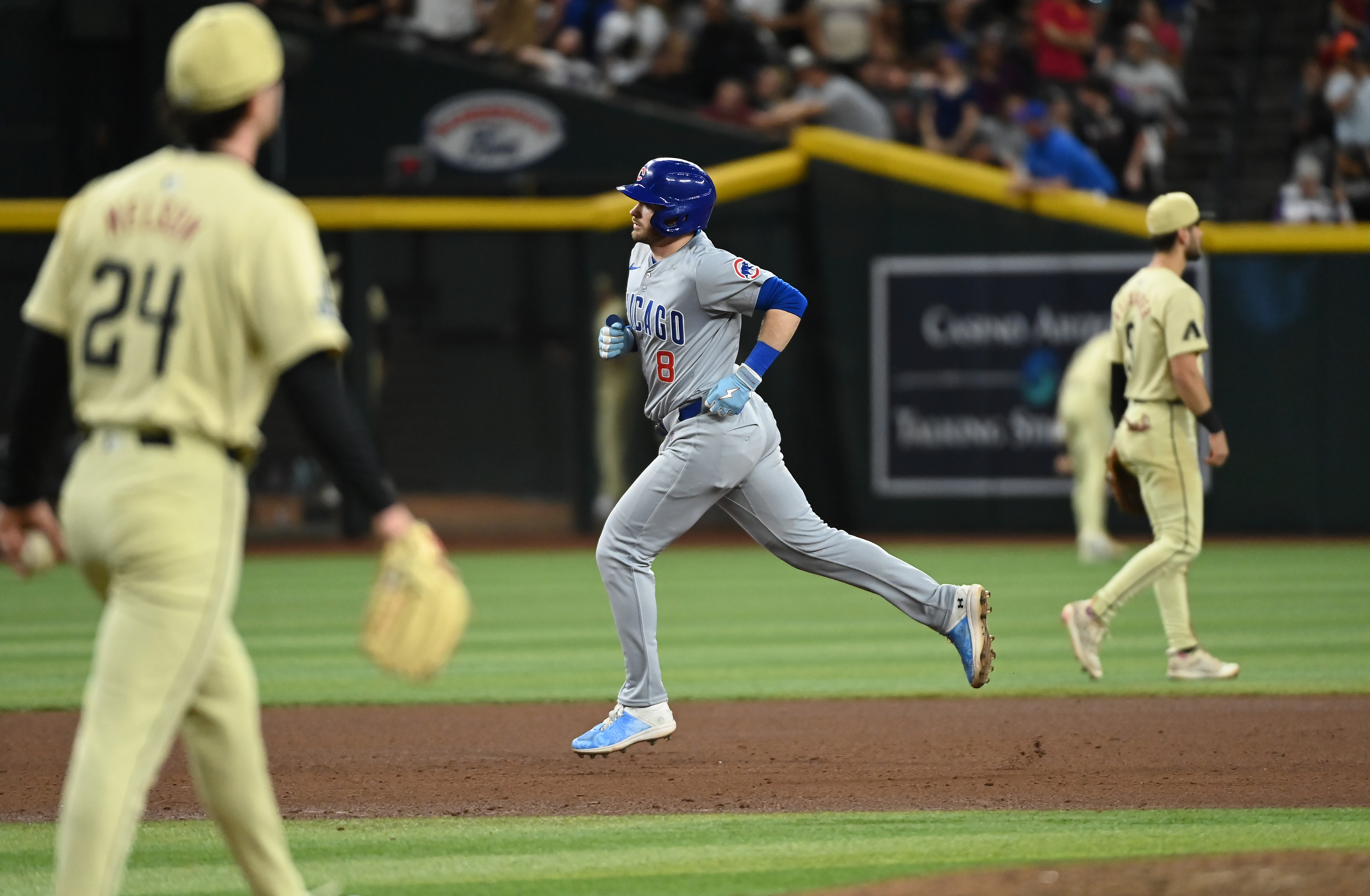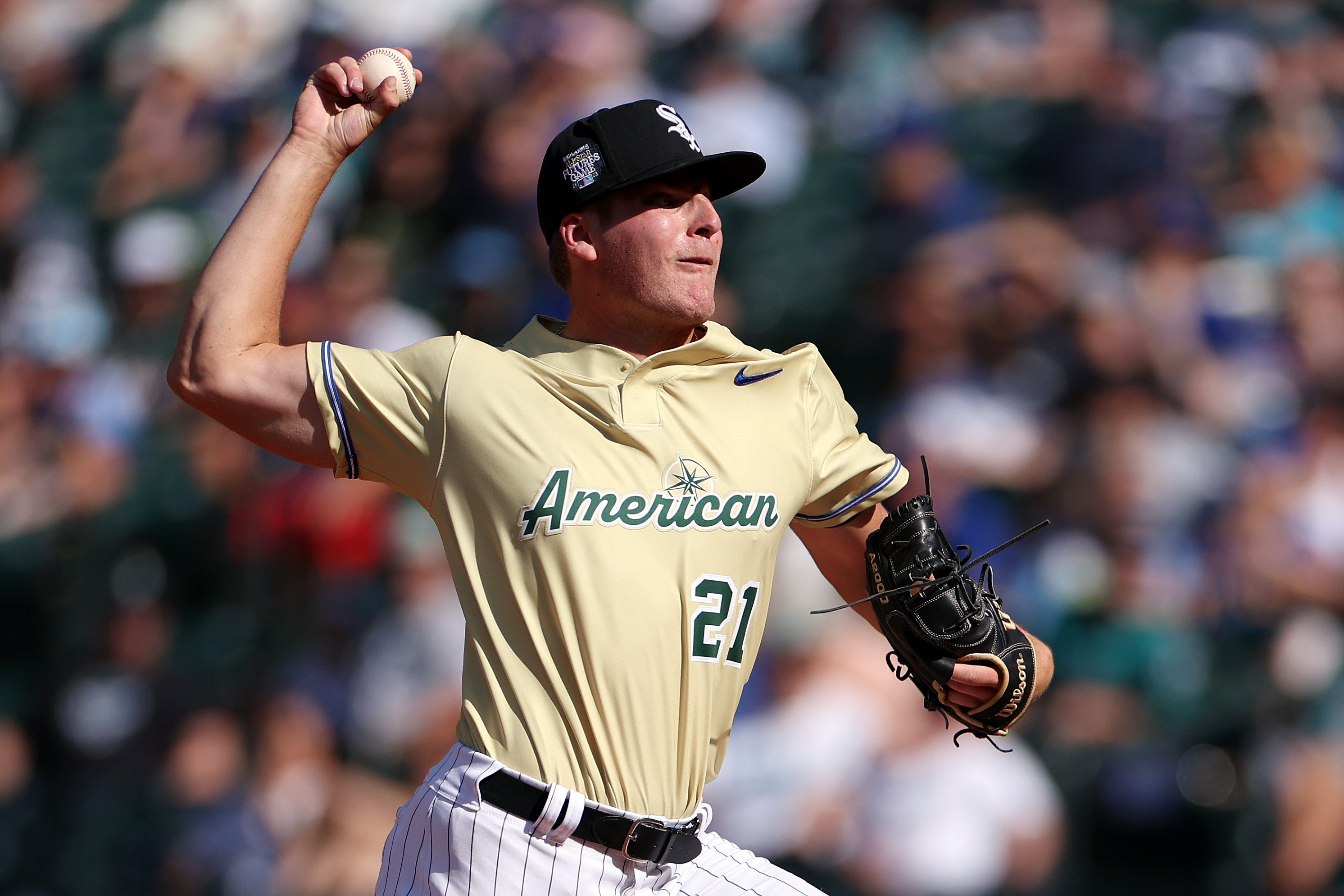Leading up to the 2011 draft, the Cubs heard a story out of an all-state event for the best players in Florida. Each guy was supposed to introduce himself and say where he was from and where he was committed to play in college.
So Javier Baez stood up, pointed to the tattoo on the back of his neck and announced: “I’m going to the University of Major League Baseball.”
“That’s Javy,” Tim Wilken said.
That’s why the Cleveland Indians still have to account for Baez, even as he takes some of the “hernia swings” Wilken once saw while tracking the uber-talented, ultra-confident prospect at Arlington Country Day School in Jacksonville.
Baez is 3-for-21 with nine strikeouts and zero extra-base hits and no walks during the World Series. But no Cub has raised his profile more in October than Baez, who can still add to his personal highlight film in November without doing much at the plate.
It’s the daring base-running, the take-charge attitude at second base for a team that led the majors in defensive efficiency, and the sixth sense for tags as the Indians try to push the running game. Down 3-2 heading into Tuesday night’s Game 6 at Progressive Field, the Cubs need more Javy Being Javy moments.
Some of that swagger and overaggressive style scared away other teams, but Wilken credited area scout Tom Clark for getting to know the Baez family as well as the player’s makeup and love of the game. Wilken’s maverick style also got him inducted into the Professional Baseball Scouts Hall of Fame this summer for his work with the Toronto Blue Jays (Chris Carpenter, Roy Halladay) and Tampa Bay Rays (Wade Davis) and Cubs (Jeff Samardzija, Josh Donaldson, Andrew Cashner, D.J. LeMahieu).
MLB
As the scouting director during the final months of the Jim Hendry administration, Wilken framed the 2011 draft with a question to his staff: Which is harder to find: a legitimate middle-of-the-order hitter or a top-of-the-rotation starter? The Cubs came up with the same answer that would drive Theo Epstein’s front office, targeting Baez with the No. 9 overall pick.
Wilken left the Cubs last year to become a special assistant with an Arizona Diamondbacks franchise now in transition again with Mike Hazen taking over for fired general manager Dave Stewart.
When Baez became the first Cub to steal home plate in a postseason game since 1907 – part of a brilliant all-around performance that eliminated the Los Angeles Dodgers and made him the National League Championship Series co-MVP – Wilken watched from (where else?) a Marriott Courtyard in Jupiter, Florida, near the spring-training complex shared by the St. Louis Cardinals and Miami Marlins. After scouting a heavily attended Perfect Game showcase, baseball officials watched Baez become a star on the satellite TV set up in the lobby.
“You stick your neck out with every pick,” Wilken said. “He’s high-risk, high-reward. And hopefully as he’s put these things together, it’s going to be a high reward for him and the Cubs, wherever his career takes him from here.
“But at the same time, (he had) the one thing that a lot of guys that are high-risk, high-reward (don’t). Normally, those guys don’t play the game that well. They do have those kinds of tools, but you don’t know how they’re going to (put it together).
“He was still a very good base-runner. He was still a very good slider. He still had plus arm strength. He still had great hands. He still was the good tagger and his instincts were off the charts. So in one sense, it wasn’t (risky).”
Open-minded manager Joe Maddon immediately noticed Baez and recognized those strengths instead of focusing on his weaknesses. Baez gained a new perspective on life after the death of his sister last year. Epstein’s inner circle never really came close to selling low and trading Baez for pitching.
The Indians looked at Baez as part of a bigger deal for Carlos Carrasco or Danny Salazar, but Cleveland has a reputation for using trade talks to get a better read on its farm system. The San Diego Padres didn’t push hard enough to move Tyson Ross. The Philadelphia Phillies and Atlanta Braves actually liked Jorge Soler more than Baez while shopping Cole Hamels and Shelby Miller.
“The only thing you were wondering was: Could he calm down his swing?” Wilken said. “There were times you could see a pretty decent two-strike swing as an amateur. It would be rare, but if you were there to see it, you’d say: ‘OK, I can gamble on that.’ I can gamble on (Cubs hitting coach John) Mallee or whoever else they want to give credit for (those) better two-strike swings.
“Credit whoever talked to him. Credit to him for taking (the advice). But that ability was there – and I don’t know if people got to see that. And there were only glimpses of that. Fortunately, it happened it front of me. That made it much easier, because all the rest of his game was fine. He wasn’t (some) crude (player).”
Another middle infielder born in Puerto Rico who moved to Florida also caught Wilken’s attention that year. But the Cubs had reports that Francisco Lindor would go in the third-to-sixth range near the top of the first round. The future All-Star shortstop surprisingly fell to the Indians at No. 8, or one spot in front of Baez.
“He was the ‘Steady Eddie,’” Wilken said. “He didn’t have that field charisma or flair that Baez had. But he was – if there’s such a thing with a high school guy – a sure draft. We kind of throw that tag mostly on college guys. But Lindor was far ahead of the scales as far as being under control of himself at the age of 17.
“If we did call a timeout or whatever, I still think at the end I might have taken Baez, just because of the damage he could possibly do as an offensive player.”
And now either Baez (108 years) or Lindor (68 years) will be front and center when one team finally ends a World Series drought.


